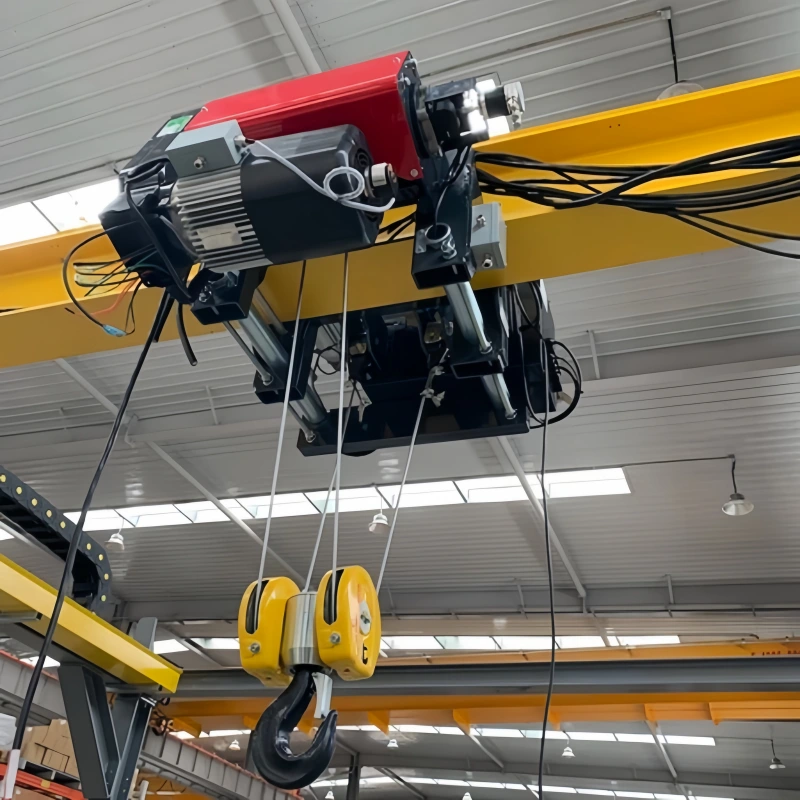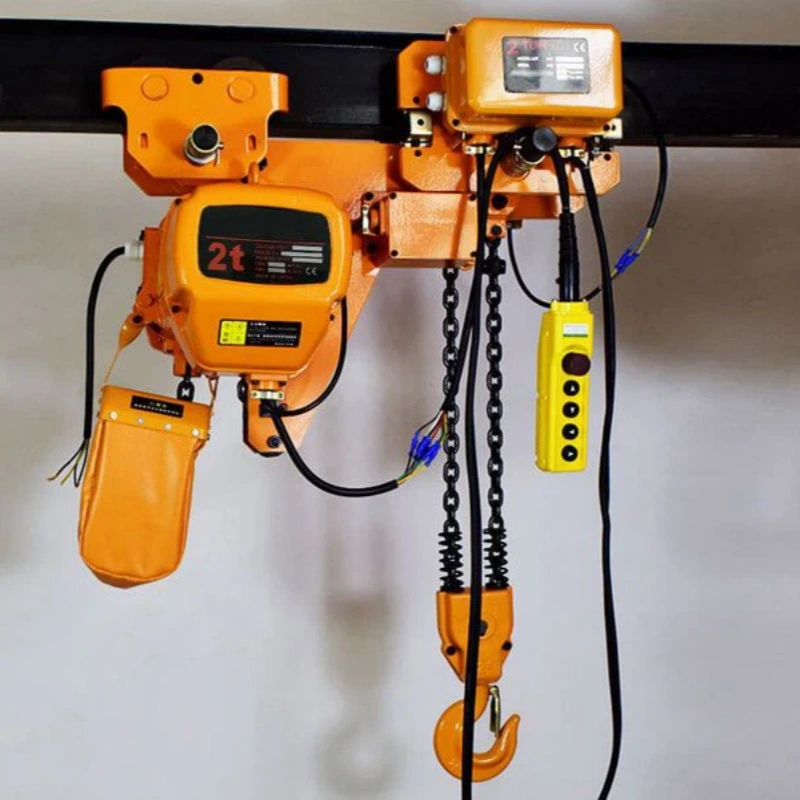For a 44 lb anchor, you should choose an anchor chain size for 44 lb anchor between 7mm and 10mm in diameter, Grade 40. This size and grade provide the necessary strength and safe handling for most marine conditions. Always consider factors like material, boat size, anchor type, windlass compatibility, and regular maintenance.
Common safety issues include using chains that are too small, neglecting chain length, or choosing a lower-grade chain. Powerful Machinery offers certified anchor chains you can trust for reliable performance.
Using a chain too small can cause failure under load.
Ignoring windlass compatibility may result in mechanical problems.
Poor maintenance leads to corrosion and weak links.
Key Takeaways
Choose an anchor chain diameter between 7mm and 10mm, Grade 40, for a 44 lb anchor. This ensures strength and safety in marine conditions.
Always match your anchor chain size with your boat’s weight and windlass compatibility. This prevents mechanical issues and ensures effective anchoring.
Maintain your anchor chain regularly. Inspect for corrosion and wear every six months to keep your anchoring system reliable.
Use a combination of chain and rope for your anchor rode. This setup provides durability and shock absorption, enhancing your anchor’s effectiveness.
Calculate the correct scope ratio for your anchor rode. A 5:1 scope is a minimum for safety, while a 7:1 scope is ideal for rough conditions.
Anchor Chain Size for 44 Lb Anchor
Recommended Diameter and Grade
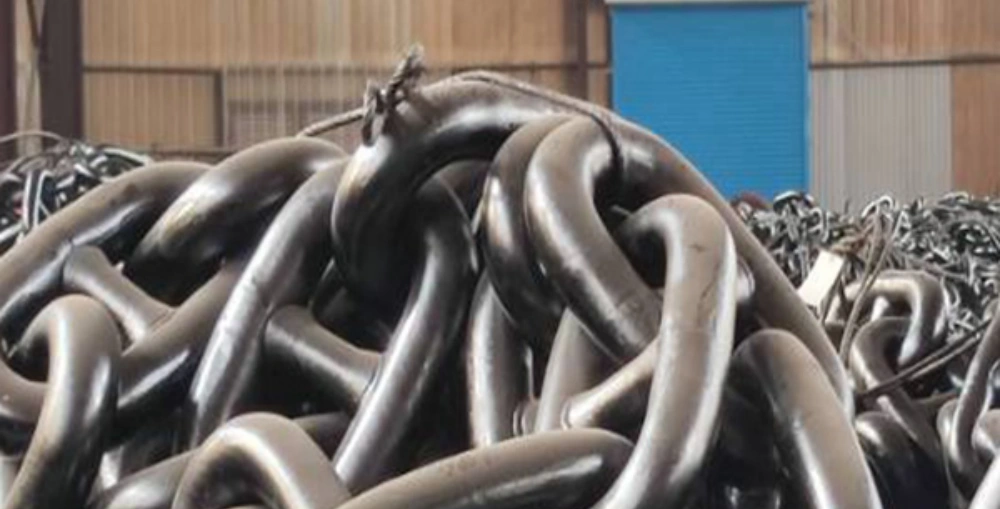
Selecting the right anchor chain size for a 44 lb anchor is essential for safe and effective anchoring. You should choose a chain diameter between 7mm and 10mm, with a chain grade of at least Grade 40.
This combination gives you the strength needed to handle the load of a 44 lb anchor in most marine environments. When you use a higher chain grade, you increase the chain’s resistance to breaking and stretching.
Tip: For a 3/8” anchor chain, pair it with a 7/16” load-rated shackle. If you use stainless steel bow shackles, increase the size by 1/8” above the chain diameter, so a 1/2” shackle matches a 3/8” chain.
Powerful Machinery’s certified anchor chains meet international standards and offer reliable performance. You can trust their products to deliver the right chain grade and chain diameter for your anchoring needs.
Boat Size and Anchor Compatibility
The anchor chain size for a 44 lb anchor must match both your anchor and your boat’s size. A heavier boat requires a stronger chain to maintain holding power, especially in rough conditions. The weight of the chain helps keep the anchor at the correct angle and prevents dragging.
Here is a quick reference table to help you choose the right chain length and diameter for different boat lengths when using a 44 lb anchor:
Boat Length (feet) | Recommended Chain Length (feet) | Common Chain Diameter (mm) |
|---|---|---|
30-40 | 70 to 100 | 7-10 |
10 (water depth) | 70 to 80 (total rode) | 7-10 |
When you select an anchor chain size, always consider your boat’s displacement. Heavier boats need a larger chain diameter and a higher chain grade to ensure safety. The chain size should match both the anchor and the boat’s weight for optimal performance.
Note: The chain’s weight is crucial for keeping tension on the anchor rode and preventing the anchor from dragging.
Powerful Machinery offers a range of certified anchor chains that you can customize for length and diameter, ensuring compatibility with your vessel and anchor.
Windlass and Handling
Your windlass must be compatible with the anchor chain size for 44 lb anchor. Most windlasses have specific requirements for chain diameter and chain grade. If you use the wrong chain size, you risk jamming or damaging your windlass.
Many boaters use 200 feet of 5/16” high-tensile chain with a 44 lb anchor, especially with modern windlass systems. For high winds or challenging conditions, you may need a heavier anchor and a larger chain diameter. Always check your windlass manual for the recommended chain size and grade.
Pro Tip: Choose a chain that fits your windlass gypsy perfectly. This ensures smooth operation and reduces wear on both the chain and the windlass.
Powerful Machinery’s anchor chains are available in various diameters and grades, making it easy for you to find a chain that matches your windlass and anchor setup. Their certified products guarantee reliable performance and easy handling.
Anchor Rode and Scope
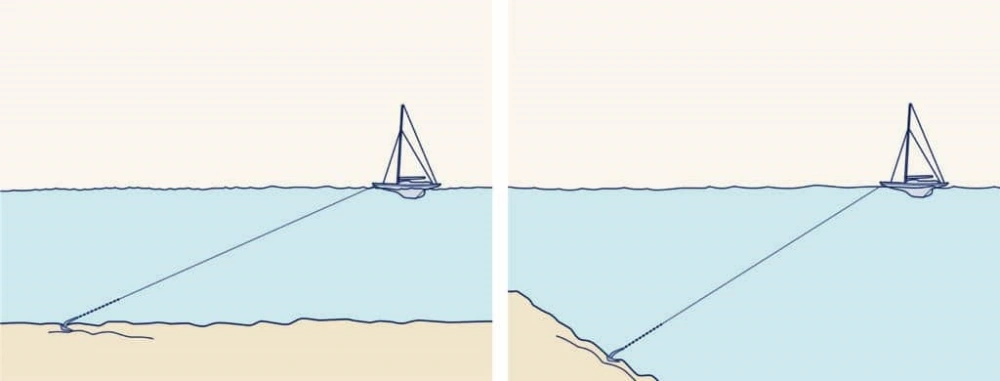
Calculating Scope Ratio
You need to understand the importance of scope when setting your anchor rode. Scope is the ratio of the length of your anchor rode to the depth of the water plus the height from the bow to the waterline. The right scope ensures your anchor sets properly and holds your boat securely.
A 5:1 scope works well in sheltered areas with a reliable anchor and enough chain.
A 7:1 scope is best for storm conditions or when you want extra security.
Never use less than a 5:1 scope for safety.
The scope ratio affects how your anchor holds. A lower scope increases the angle of pull, which can cause the anchor to break free, especially in rough weather. A 7:1 scope keeps the lead angle below 8 degrees, giving your anchor the best chance to hold.
Chain and Rope Combination
Most boaters use a combination of chain and rope for their anchor rode. This setup gives you the benefits of both materials. The chain protects against abrasion on rocky bottoms and helps keep the anchor at the right angle. The rope adds elasticity, which absorbs shock loads when waves or wind hit your boat.
The chain should make up at least one-third of your total anchor rode.
Three-strand nylon rope is a popular choice for the rope section.
The rope increases the scope, making your anchor more effective.
The elasticity of the rope prevents sudden jerks that could damage your anchor system. However, too much chain can add unnecessary weight to the bow and reduce shock absorption in high winds.
When matching your rode to a windlass, always check the manufacturer’s recommendations for both chain and rope sizes. This ensures smooth operation and prevents jams.
Adjusting for Water Depth
You must adjust your anchor rode length based on water depth. For every 25 feet of water, use at least 6 feet of chain. Always maintain a minimum 5:1 scope, even in shallow water. In deeper water or rough conditions, increase your scope to 7:1 or more.
Water Depth (ft) | Minimum Chain (ft) | Total Rode (ft) at 5:1 Scope |
|---|---|---|
10 | 6 | 50 |
25 | 6 | 125 |
40 | 10 | 200 |
Powerful Machinery offers custom anchor rode solutions. You can select the exact chain length and rope type to fit your boat and anchoring needs. When matching your rode to a windlass, choose the anchor chain size first, then select the compatible rope diameter for a seamless fit.
There are several types of anchor rodes, but the chain and rope combination remains the most versatile and effective for a 44 lb anchor.
Anchor Chain Maintenance
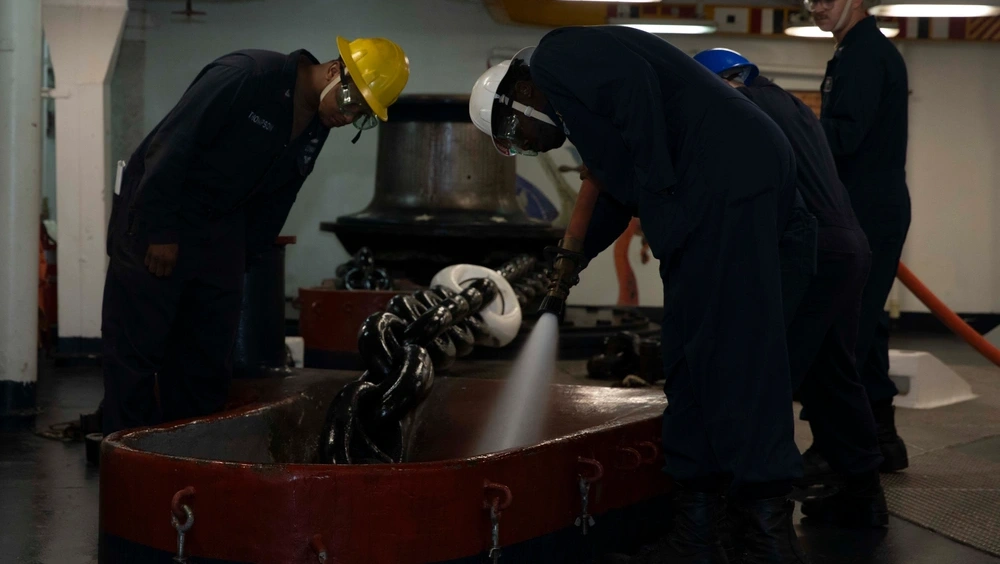
Proper anchor chain maintenance keeps your anchoring system reliable and safe. You need to check your chain often and follow a routine to prevent common issues. Many boaters report problems such as wear from stress, rust, broken links, and damage from improper handling.
You can avoid these problems by following a few simple steps.
Inspection and Cleaning
You should inspect your chain at least once every six months. Look for signs of corrosion, worn links, or any damage that could weaken the chain. Use the table below as a guide for inspection intervals:
Inspection Interval | Recommendation |
|---|---|
Anchor Chains | At least once every 6 months |
After each use, rinse your chain with fresh water to remove salt and sediment. A high-pressure washdown system works well for stubborn debris. You can also apply protective coatings like Fluid Film to prevent rust. Regular cleaning and end-to-end cleaning of the chain help extend its life.
Rinse the chain after every anchor retrieval.
Use a brush to remove stubborn dirt.
Apply anti-rust paint or grease to exposed parts.
Lubrication and Storage
Lubricate your chain regularly to keep it moving smoothly and to protect against corrosion. Store your chain in a dry, well-ventilated area. Use silica gel packets to absorb moisture. Coil the chain neatly and secure it with zip ties or hooks. This prevents tangling and allows air to circulate.
Store the chain off the ground.
Keep the anchor and chain dry when not in use.
Avoid stacking heavy objects on the chain.
Replacement Guidelines
You should replace your chain if you see heavy corrosion or worn links, especially in areas that show visible damage. Most experts recommend replacing the chain every 5 to 7 years, depending on corrosion levels. In normal marine conditions, a well-maintained chain can last 10 to 20 years.
Always check for signs of rust or broken links before each trip. If you notice any weakness, replace the chain right away.
Regular anchor chain maintenance ensures your anchor system stays strong and dependable. Powerful Machinery recommends following these tips to maximize the lifespan of your chain and keep your boat safe.
Common Mistakes with Anchor Chain Size
Undersized or Low-Grade Chain
Choosing the wrong chain for your anchor can put your boat at risk. If you use an undersized or low-grade chain, you may face several problems:
The chain may not handle the forces from your anchor, especially in rough water.
Low-grade chains can break when you need them most.
An inadequate chain can jam or move poorly across your deck, making anchor handling difficult.
If you miscalculate the load, you might select a chain that fails under pressure, risking your anchor’s effectiveness.
You should always select a certified chain from a trusted source like Powerful Machinery. Their products meet strict standards, giving you peace of mind every time you drop your anchor.
Poor Scope Calculation
Many boaters underestimate the importance of scope. If you do not calculate scope correctly, your anchor may drag or fail to hold your boat in place. Insufficient scope reduces the holding power of your anchor, especially when the wind or current changes. You could lose control of your vessel if the anchor does not set properly.
Remember: The most critical factor in secure anchoring is scope. Always ask yourself, how long should your anchor rode be? If you do not know, you risk drifting away from your intended spot.
Incompatible Rope and Chain
Matching line and chain size is essential for a reliable anchor system. If your rope and chain do not fit together, you may experience jams or weak connections. The wrong combination can also cause problems with your windlass.
Always check that your rope diameter matches your chain size and that both work smoothly with your anchor.
Tip: Matching line and chain size ensures your anchor system works as a single, strong unit.
Neglecting Maintenance
Neglecting chain maintenance can shorten the life of your anchor system. If you do not inspect your chain regularly, you may miss signs of corrosion or wear. A damaged chain can fail without warning, putting your boat and crew at risk.
Clean your chain after each use, store it properly, and replace it when you see signs of damage.
Certified chains from Powerful Machinery come with maintenance tips to help you keep your anchor system in top shape.
By avoiding these common mistakes, you ensure your anchor, chain, and rode work together for safe and secure anchoring. Always consider how long your anchor rode should be, and use certified products for the best results.
Conclusion
You should select a 7mm to 10mm, Grade 40 anchor chain for your 44 lb anchor, ensuring the chain material matches your marine environment. Powerful Machinery’s certified chains deliver strength and reliability for every voyage.
Match your chain to your boat, anchor, and windlass for optimal safety. Regular maintenance is essential. Review the table below for inspection tips recommended by marine safety organizations:
Inspection Type | Description |
|---|---|
Thorough Examination | Inspect the entire length, focusing on anchor and vessel connections. |
Professional Inspections | Schedule checks by marine surveyors or chain experts at intervals. |
Post-Extreme Weather Inspections | Inspect after severe weather for damage or weakening. |
Damage Response | Address any damage or wear immediately to maintain reliability. |
Check for corrosion, worn links, or deformed studs.
Apply anti-corrosive grease to shackles and swivels.
Store chains dry and coiled.
Explore Powerful Machinery’s anchor chain solutions for peace of mind on the water.
FAQ
What size anchor chain should you use for a 44 lb anchor?
You should select a chain with a diameter between 7mm and 10mm for a 44 lb anchor. This size ensures your anchor holds securely in most marine conditions. Always check your windlass compatibility before choosing your chain.
How much chain do you need for a 44 lb anchor?
You need at least 70 to 100 feet of chain for a 44 lb anchor on most boats. The chain length helps your anchor set properly and keeps your vessel secure. Adjust the length based on your boat size and typical anchoring depth.
Can you use only rope with a 44 lb anchor, or do you need a chain?
You should always use a chain with your 44 lb anchor. The chain adds weight and abrasion resistance, helping your anchor hold better. Rope alone may not provide enough holding power or durability for a 44 lb anchor in changing conditions.
How often should you inspect the chain on your 44 lb anchor setup?
Inspect your chain every six months or after heavy use. Look for corrosion, worn links, or damage. Regular checks keep your 44 lb anchor system reliable and safe. Replace the chain if you see any signs of weakness.
What type of anchor works best with a 44 lb anchor and chain system?
A plow or claw anchor pairs well with a 44 lb anchor and chain setup. These anchor types offer strong holding power in various seabeds. Always match your anchor type to your boating environment for the best results.

